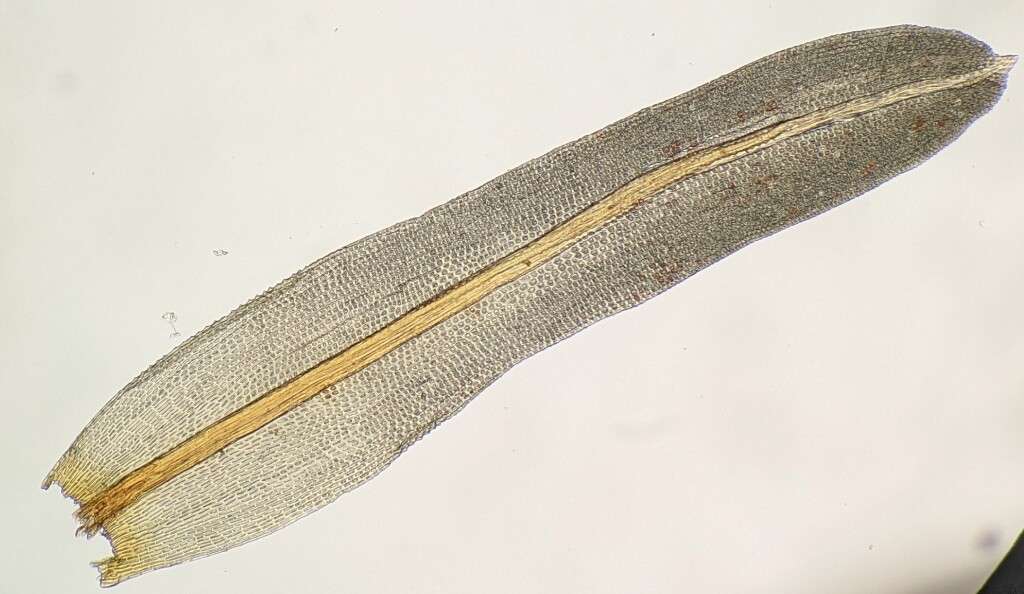Macromitrium ligulaefolium
Broth.Pseudautoicous. Asexual reproduction rarely by fusiform gemmae on branch leaves. Mats on trees and rocks, green, to 5 (–10) mm tall. Stem red brown or black, tomentose with dark brown to blackish rhizoids on lower surface where in contact with substrate. Branch leaves spreading and curved, with a strongly inrolled apex, when dry, flexuose-spreading when moist, linear-lanceolate to ligulate, 1.1–3 mm long, 0.2–0.4 mm wide, carinate; apex acute-apiculate; costa ending below or in apex; margin minutely crenulate toward apex, entire toward base, plane to reflexed, without a border; laminal cells in apical half rounded, 4–12 μm long, 5–12 μm wide, with low papillae becoming taller toward base, gradually transitioning into basal laminal cells; basal laminal cells rectangular, 12–35 μm long, 10–12 μm wide, some with a papilla. Seta 3–10 mm long, golden brown becoming yellow toward capsule, smooth, twisted clockwise. Calyptra with fine hairs near apex or glabrous. Capsules erect, narrowly ovoid to ellipsoid, 1.4–1.8 mm long, straight, yellowish to red-brown. Peristome single and greatly reduced or absent; exostome a low papillose membrane 1–3 cells high, inconspicuous or absent; endostome absent. Operculum long-rostrate from short conic base, 0.6–0.7 mm long.
EGL, OtR, Strz, HFE. New Zealand. Rarely recorded in rainforest and wet-sclerophyll forest in the Otways and throughout Gippsland.
 Spinning
SpinningVitt, D.H.; Ramsay, H.P. (2006). Macromitrium. Flora of Australia 51: 191–218.


